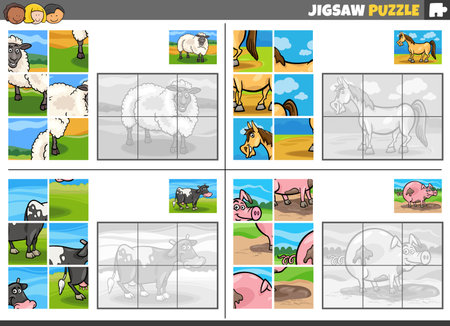Introduction to Carbon Footprints in Gardening
In recent years, sustainability has become a central concern for gardeners across the UK. As we strive to reduce our environmental impact, understanding the carbon footprint associated with garden supplies is increasingly important. The carbon emissions linked to gardening materials—ranging from compost and fertilisers to tools and planters—are not only shaped by how these products are manufactured, but also by how far they travel before reaching our sheds. For British gardeners, the decision between imported and locally produced supplies has direct implications for sustainability efforts. With the pressing need to meet national climate targets, every aspect of our gardening practice—including sourcing choices—matters in the collective effort to lower greenhouse gas emissions. This article sets out to explore these issues, providing an overview of how our everyday gardening decisions play a role in shaping a more sustainable future for the UK.
2. Understanding Imported vs Local Garden Supplies
To accurately compare the carbon impact of imported and locally produced garden supplies, it is crucial to first understand what each category entails in the context of British gardening. The distinction lies not only in the place of origin but also in how these supplies are sourced, manufactured, and transported. Below is a breakdown highlighting key differences and typical examples relevant to gardens across the UK.
What Are Imported Garden Supplies?
Imported garden supplies are products or materials that have been manufactured or grown outside the United Kingdom and then shipped into the country for sale. These often include items such as exotic plants, decorative stones from Asia or Europe, chemical fertilisers produced abroad, and even tools manufactured in distant countries. The journey these products undertake can be extensive, involving multiple modes of transport—ship, lorry, rail—and significant packaging requirements.
Common Examples of Imported Supplies
- Ceramic pots from Italy or China
- Peat-based compost imported from the Baltic region
- Ornamental plants like olive trees from Spain
- Garden tools manufactured in Germany or the Far East
- Decorative aggregates from Mediterranean countries
What Are Locally Produced Garden Supplies?
Locally produced garden supplies are sourced, grown, or manufactured within the UK. These products typically have a shorter supply chain, which may result in lower transportation emissions and support for local businesses. Local suppliers might include nurseries producing native plants, British-made composts utilising green waste, and domestically crafted wooden planters.
Common Examples of Local Supplies
- Native shrubs and perennials grown in British nurseries (e.g., lavender, foxglove)
- Bark mulch from UK forestry operations
- Recycled plastic planters made in England
- Composts produced from local green waste schemes
- Limestone gravel quarried in Yorkshire or Derbyshire
A Comparative Table: Imported vs Local Supplies
| Type of Supply | Examples (UK Context) | Typical Source Location |
|---|---|---|
| Imported | Ceramic pots, peat compost, olive trees | Italy, Baltic states, Spain |
| Local | Native plants, recycled compost, limestone gravel | Bristol, Yorkshire, Surrey |
This breakdown sets the stage for understanding how sourcing choices impact carbon footprints in British gardens. By recognising where our garden supplies come from and what goes into their production and transport, we lay the groundwork for a more informed comparison of their environmental impacts.

3. Transport and Supply Chains: The Journey to Your Garden
When it comes to understanding the carbon impact of your garden supplies, the journey each product takes from its point of origin to your shed is crucial. Imported goods often travel thousands of miles by sea, air, or road before reaching British retailers. Maritime shipping remains the most common method for heavy goods like pots, composts, and tools due to its cost efficiency; however, despite economies of scale, these container ships are significant contributors to greenhouse gas emissions. Air freight, used for high-value or perishable items, has an even larger carbon footprint per kilogram transported. Once goods arrive at UK ports such as Felixstowe or Southampton, they are distributed further by lorry or van—adding extra miles and emissions before they reach local garden centres or your doorstep.
In contrast, locally produced supplies benefit from much shorter supply chains. These products often travel directly from regional farms or workshops to nearby stores, or even straight to consumers via farmers’ markets and community initiatives. The reduced distance not only cuts down on fuel consumption but also simplifies logistics—requiring fewer refrigeration units, less packaging for long-haul protection, and minimising storage time in warehouses. Additionally, local producers are more likely to use smaller vehicles that run on cleaner fuels or even electric power for short-haul deliveries.
The complexity of global supply chains also contributes to hidden emissions: imported goods may pass through multiple distribution centres across continents, each step demanding energy for handling and storage. This contrasts with local networks where the path from producer to consumer is more transparent and direct. Therefore, while both imported and locally produced garden supplies have their place in British gardening culture, understanding their respective journeys highlights a key area where conscious choices can help reduce your garden’s overall carbon footprint.
4. Carbon Impact Analysis: Key Factors
When comparing the carbon impact of imported versus locally produced garden supplies, it is essential to evaluate multiple stages of the product lifecycle. This includes production practices, packaging choices, and carbon emissions throughout transportation and distribution. Each of these factors contributes differently to the overall environmental footprint, with notable distinctions between products sourced internationally and those produced within the UK.
Production Practices
The method and scale of production play a significant role in determining a product’s carbon footprint. Locally produced garden supplies are often made by smaller businesses that may use less energy-intensive processes and can adopt sustainable practices more easily. In contrast, imported goods might originate from large-scale operations in regions where energy is derived from fossil fuels, contributing to higher emissions per unit produced.
Packaging Considerations
Packaging is another critical factor. Imported products typically require more robust and layered packaging to withstand long-distance transport, increasing material usage and waste. Local suppliers, on the other hand, can minimise packaging or use recyclable materials due to shorter delivery routes and reduced handling.
Carbon Emissions at Each Stage
| Stage | Imported Supplies | Locally Produced Supplies |
|---|---|---|
| Production | Often high emissions (energy-intensive factories abroad) | Potentially lower emissions (smaller scale, renewables) |
| Packaging | Heavier, multi-layered for shipping durability | Lighter, minimal or recyclable due to local delivery |
| Transport & Distribution | Long distances (air/sea freight), high emissions | Short distances (road/rail), significantly lower emissions |
| End-of-life Disposal | Difficult recycling if mixed materials used; higher landfill risk | Easier recycling if local schemes available; less waste generated |
Highlighting the Differences
The comparative analysis reveals that imported garden supplies generally incur higher carbon emissions at nearly every stage—from production through to disposal—largely due to industrial manufacturing methods, extensive transport, and greater reliance on complex packaging. By contrast, locally produced items benefit from proximity to market, access to greener energy sources, and better alignment with UK recycling infrastructure. For environmentally conscious gardeners in Britain, choosing local not only supports community businesses but also substantially reduces the overall carbon footprint associated with gardening activities.
5. Supporting Local: Environmental and Community Benefits
Opting for locally produced garden supplies does more than just cut down on carbon emissions—it offers a host of advantages that ripple across the UK’s environment and communities. When gardeners choose compost, plants, and tools made closer to home, they directly support local businesses, from small family-run nurseries to regional manufacturers. This choice keeps money circulating within the UK economy, helping to sustain jobs and encourage further innovation in sustainable practices.
Beyond economic impact, sourcing garden supplies locally means fewer miles travelled. This translates to lower fuel consumption and a significant reduction in greenhouse gas emissions associated with long-distance transportation. By cutting out international shipping, lorry journeys, and excessive packaging, each purchase becomes a tangible step towards a smaller carbon footprint—an important consideration for anyone keen to garden responsibly in line with Britain’s climate goals.
Furthermore, strengthening local supply chains bolsters community resilience. During periods of global disruption—such as pandemics or trade uncertainties—relying on local providers helps ensure continued access to essential gardening materials. Local growers are also better attuned to British weather patterns and soil conditions, offering products tailored for success in UK gardens. This knowledge sharing fosters a vibrant gardening culture rooted in shared experience and sustainability.
In summary, choosing locally produced garden supplies is not simply an environmental gesture; it is a commitment to nurturing the UK’s people, economy, and landscapes for future generations.
6. Practical Tips for Low Carbon Gardening
Reducing the carbon footprint of your gardening activities is both achievable and rewarding, especially when making conscious choices about sourcing and using supplies in the UK. Here are some actionable tips for gardeners looking to make a positive environmental impact:
Choose Local Whenever Possible
Opt for garden supplies that are produced within the UK or even your local region. Not only does this support British businesses, but it also significantly cuts down on transport emissions associated with importing goods from overseas.
Check for Sustainable Certifications
Look for composts, fertilisers, and other products that carry reputable eco-certifications such as the Soil Association or FSC (Forest Stewardship Council). These standards often ensure lower carbon practices throughout the supply chain.
Embrace Peat-Free Alternatives
Avoid peat-based composts, which contribute heavily to carbon emissions through habitat destruction and release of stored CO₂. Instead, select peat-free options made from sustainable materials like coir, green waste, or wood fibre.
Reuse and Recycle Where Possible
Repurpose containers, pots, and other materials rather than buying new. Many garden centres in the UK offer take-back schemes for plastic pots. Composting your own green waste is another excellent way to close the loop and reduce reliance on imported soil conditioners.
Plan Efficient Deliveries
If you need larger quantities of materials such as mulch or gravel, try to consolidate orders to minimise delivery trips. Consider joining forces with neighbours to place bulk orders from local suppliers.
Grow Your Own Plants from Seed
Whenever feasible, propagate plants from seed or cuttings instead of purchasing mature plants that may have been grown abroad. This not only reduces transport emissions but also gives you more control over growing conditions and sustainability.
Be Informed About Product Origins
Always ask your supplier about where their products come from. Transparency in sourcing allows you to make better-informed decisions aligned with your low-carbon goals.
By adopting these practical measures, UK gardeners can play an active role in mitigating climate change while enjoying healthier gardens and supporting local communities. Every small action counts towards a greener future.

